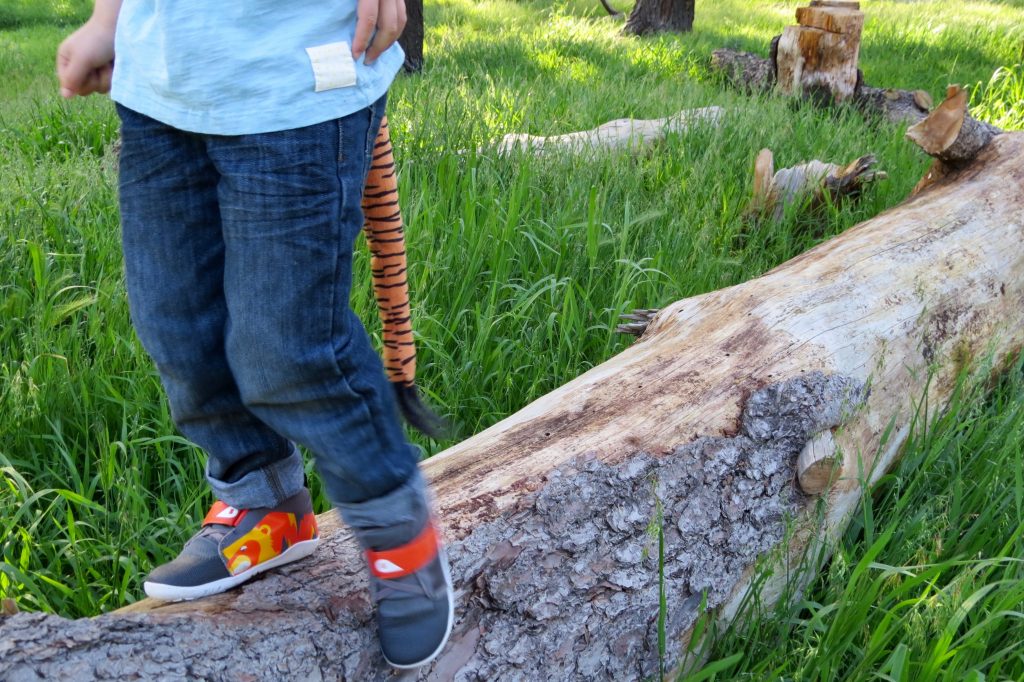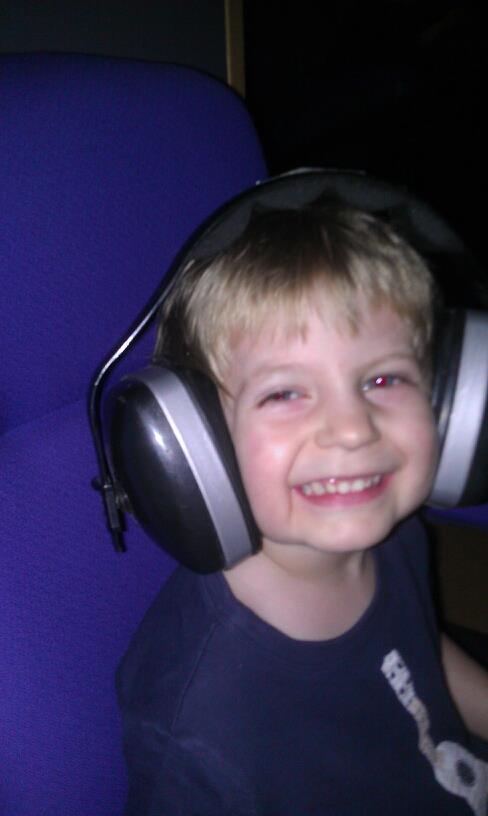“Sensory kids”. You know if you have one. I have two. Having a sensory kid makes every day parenting substantially more challenging. I laugh when I hear parents complaining their children are picky eaters and then go on to describe the nutrient dense items they are able to feed their kids. Parents of true picky eaters know that the real life honest to goodness picky eaters may have only a handful of foods they consider palatable and that they frequently run the risk of becoming stunted and nutrient deficient.
Parents of sensory kids understand the true anguish that loud sounds can cause their kids. When our eldest was little taking him out in public ran the risk of meltdowns if we stumbled across a spruiker with a microphone at the shops, a busker, or heaven forbid a life guard issuing advice through a megaphone. I couldn’t take him to birthday parties because he was terrified there would be party whistles there.
Then there’s footwear. I have lost count of the number of tantrums and battles that a request for my children to wear shoes has brought on. Footwear has been my parenting nemesis – it is often required, rarely accepted.
There are a few reasons kids can have sensory issues. Sensory issues are common among children with Autism Spectrum Disorder. Sensory Processing Disorder is a term used to describe a cluster of symptoms/behaviours among children where they have heightened senses. Children with Sensory Processing Disorder find normal exposure to the sensations related to noise, taste and/or touch distressing. For the purpose of this article though rather than labelling children with a disorder I’d rather just think of them as “sensory kids”. As I said before, you know if you have one.
This article is for parents of sensory kids that wish to travel. Is is possible? Well yes it is. We have done lots and lots of it. There is however some practical measures that we have found helpful with our own sensory kids.
Inflight:
Flight Attendant Beth author of Cloudsurfing Kids has some great tips for flying with a sensory sensitive child. She suggests providing an area of retreat for your child, such as under a floppy hat or a blanket, packing sensory activities and practicing before the flight e.g. practice going through security, area eating from a tray.
Routine:
Sensory children may be particularly reliant on routine. Try and incorporate aspects of your regular routine even when traveling. Eg bedtime stories, favourite foods and comfort toys can travel with you. This is perhaps our most useful tool to avoid meltdowns.
Taking time out:
Having quiet time is important for all kids but particularly so with sensory kids. Interspersing “big” with “little” days can help reduce sensory overload and minimise meltdowns. We are much more inclined to pay for late checkouts rather than risk sensory overload on a late flight. Similarly we break extra long flights with stop-overs even if it just to have some quiet time in a hotel.
Sound:
Nose reducing reducing headphones are not recommended regularly for children with sensory issues related to loud noises (they can impact on hearing development). On special occasions though, such as when traveling they can be an essential part of your travel kit. We found them invaluable for example when we took our boys to Disneyland a few years ago. We were really concerned that our son would not tolerate the noise of parades and fireworks but the headphones gave him the confidence to enjoy the spectacle without the noise. As he became used to the idea of being exposed to loud noise there (and realised how much fun he was having) we were able to put the headphones away.
Food:
Traveling with a picky eater is tricky. You need to be prepared for picky eating children to reduce their food choices even more than usual when faced with cross-cultural situations involving new foods. My own pragmatic approach is that having my children maintaining their calorie intake when travelling is more important than having a balanced diet. We don’t make a fuss over meal times but instead encourage them to try food that is similar to ones they will eat at home e.g. if they eat pancakes perhaps they will eat naan bread. For travel longer than a couple of weeks it may be appropriate to supplement your children’s diet eg. with Sustagen or vitamins. We also take some essentials with us in our luggage (eg. Vegemite).
Clothes:
Sensory kids can really struggle with clothing they are unused to. For example, visiting cold climates requiring layering or large jackets. When we lived in Cairns we would “practice” wearing winter clothes before visiting family in Australia’s south during winter months so that the boys were used to them. Getting the children involved in packing, and chosing their own clothes has also been helpful. For example, my son has strong ideas about which jackets and jumpers feel uncomfortable on his body and by being involved in the packing it means luggage space is not taken up with clothes that won’t be worn.
Shoes:
Lordy lordy, did I say what an issue shoes are in our household? As with clothing if traveling to a destination out of season I have my children practice wearing their shoes before we depart. This is extra important if you are traveling for an important event such as a family wedding. Shoes that are fun (sparkles, or cool kids designs) can help distract sensory kids from uneasy sensations wearing certain shoes and allow them time to get used to them. I always involve my kids in shoespurchases to ensure they love the shoes they wear. Investing in shoes that have had podiatry input in their design is also a sensible measure if you have kids with sensory issues.
This post is sponsored by Bobux shoes. Bobux shoes are for kids learning to walk and pre-schoolers, all with input from a podiatrist. And yes they are shoes my own sensory kids love to wear!
About the author:
Danielle is a mum to three young kids. She’s also a medical doctor with fellowships in general practice and public health medicine.
© Copyright 2016 Danielle, All rights Reserved. Written For: Bubs on the Move





Pingback: The traveling family gift guide | Bubs on the Move
Pingback: Jessica Biel can you please bring your restaurant Au Fudge to Australia? | Bubs on the Move